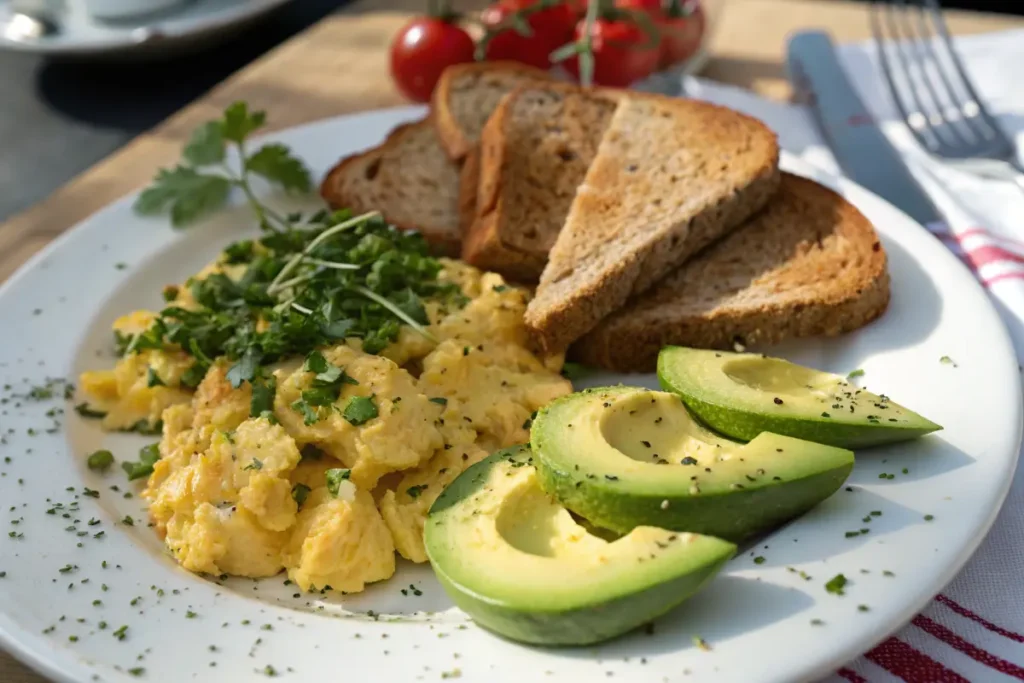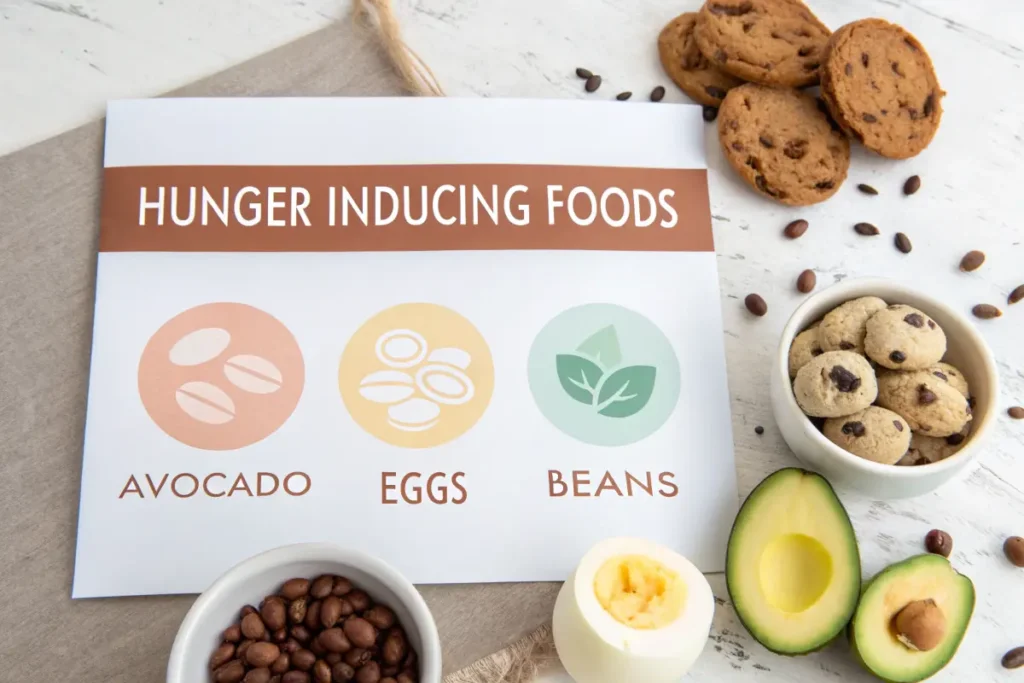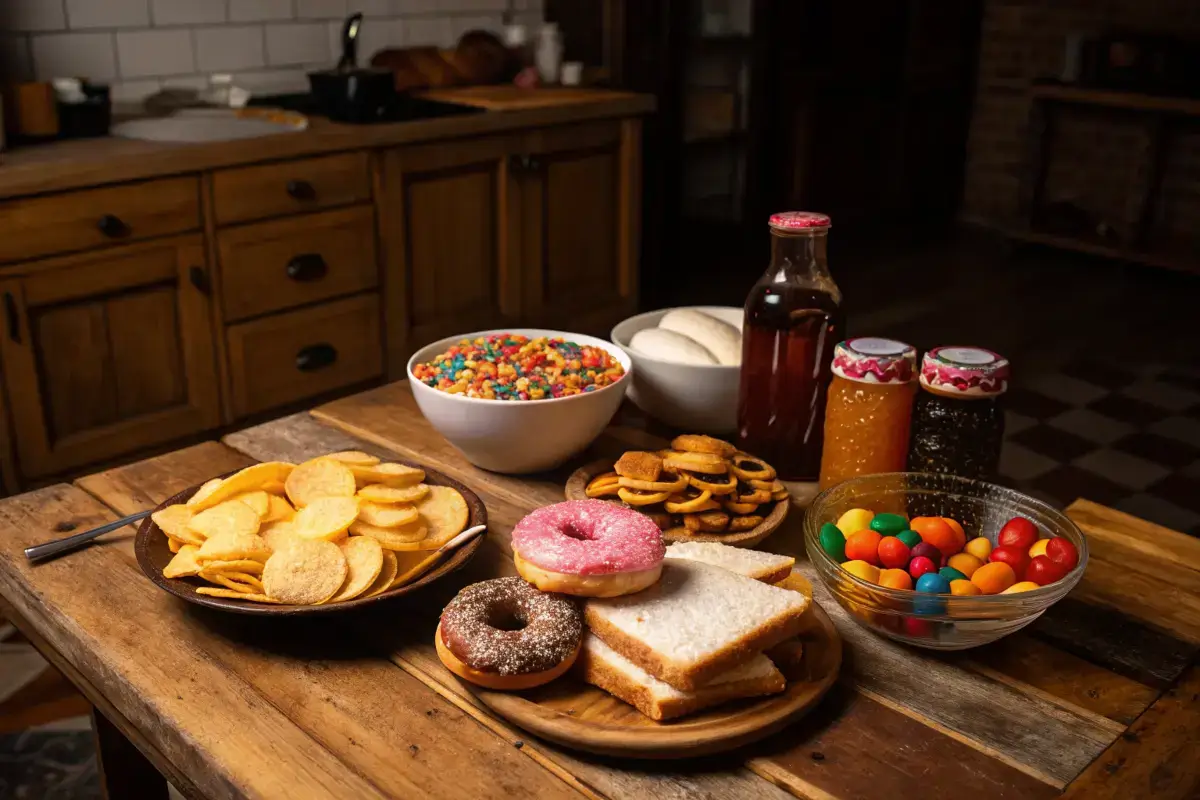Food plays a fascinating role in how we feel throughout the day. Some meals leave us satisfied, while others, surprisingly, make us hungrier than before. This article explores foods that will make you hungry, diving into the science behind hunger, specific hunger-triggering foods, and tips for managing those cravings. We’ll also bust common myths about hunger-inducing foods and highlight those that can actually help curb your appetite. Let’s dig in!
The Science Behind Hunger and Food Choices
Understanding why certain foods make you hungrier requires peeling back the layers of biology, nutrition, and even psychology. Hunger isn’t just about an empty stomach—it’s a complex process influenced by hormones, nutrients, and even what you eat.
How Hunger Works in the Human Body
Hunger begins with the interplay of hormones like ghrelin (the “hunger hormone”) and leptin (the “satiety hormone”). When your stomach is empty, ghrelin levels rise, signaling your brain that it’s time to eat. Once you’ve had a meal, leptin kicks in to tell you to stop. However, this system can be thrown off balance by specific hunger-inducing foods.
For example, sugary or highly processed foods can cause sharp spikes and crashes in blood sugar levels, making you feel hungry even after a large meal. Hormonal imbalances or habits like skipping meals can also exacerbate hunger.
The Role of Specific Foods in Triggering Hunger
Some foods may feel like they’re filling you up, but they trigger cravings instead. Take refined carbs, like white bread or pastries—they’re digested so quickly that your body is left wanting more soon after. Similarly, artificial sweeteners, despite their zero-calorie allure, can confuse your brain and stimulate appetite by tricking it into expecting sugar.
On the other hand, beverages like sodas or juices often pack a caloric punch without providing satiety, leaving you both hungry and calorie-heavy. Even foods marketed as “healthy,” like low-fat yogurt or granola bars, can backfire due to their added sugars and lack of protein or fiber.
15 Foods That Surprisingly Make You Hungrier
It might seem counterintuitive, but many common foods can leave you craving more instead of satisfying your hunger. Let’s explore the most surprising culprits.
Sugary Snacks and Their Effects on Hunger
Sugary snacks, like candy, cookies, and donuts, provide a quick energy boost—but it’s short-lived. The rapid spike in blood sugar levels is followed by a steep crash, leaving you hungrier than before. This cycle is a recipe for overeating.
Pro Tip: Swap sugary snacks for options like fruit paired with nuts to balance natural sugars with protein and healthy fats. For more snack ideas, check out healthy baking recipes for inspiration.
Refined Carbs and Why They Leave You Unsatisfied
White bread, pasta, and rice may fill you up temporarily, but these refined carbs lack fiber and nutrients that promote satiety. They digest quickly, causing hunger pangs to return sooner than you’d expect.
Opting for whole grains, such as brown rice or quinoa, can help you feel fuller for longer. For meal prep ideas, visit top meal prep recipes for muscle building.
The Impact of Artificial Sweeteners on Appetite
Artificial sweeteners like aspartame and sucralose are calorie-free, but they can trick your brain into thinking sugar is coming. This confusion leads to increased appetite and cravings for real sugar.
Consider replacing artificially sweetened drinks with flavored water or herbal teas to curb cravings without disrupting hunger signals.
Juices and Smoothies: Healthy Yet Hunger-Inducing
Fruit juices and smoothies, while seemingly healthy, often lack the fiber found in whole fruits. Without the fiber, these beverages are absorbed quickly, leading to another hunger surge.
Did you know? Adding ingredients like chia seeds or protein powder to your smoothie can slow digestion and keep hunger at bay. For recipes, try these 21 delicious smoothies.
Salty Snacks and Dehydration-Driven Cravings
Chips, pretzels, and other salty snacks often lead to dehydration, which can mimic hunger. Instead of satisfying you, these snacks make you crave more food to compensate for the fluid imbalance.
Hydrate before snacking to avoid mistaking thirst for hunger.
Common Myths About Hunger-Inducing Foods
There’s plenty of misinformation about what causes hunger. Let’s bust a few myths.
“Low-Calorie Foods Help You Stay Full”—Is This True?
While low-calorie foods may seem ideal for weight management, many lack the nutrients that signal fullness. For example, “light” salad dressings and low-fat yogurt are often stripped of fats that help regulate hunger hormones.
Instead, add healthy fats like avocado or olive oil to meals to promote satiety. Learn more about incorporating healthy oils with recipes like sesame oil benefits and uses.
Misconceptions About Protein Bars and Shakes
Protein bars and shakes are often marketed as meal replacements, but many contain added sugars and lack fiber. These “healthy” options can leave you feeling unsatisfied and looking for your next meal sooner than expected.
To ensure your snacks truly fuel you, opt for whole-food alternatives or high-protein meals. Explore high-protein recipes to find the right balance.
Foods That Keep Hunger at Bay
While some foods leave you wanting more, others are like your hunger’s best friend—they keep cravings in check. Incorporating these into your diet can make all the difference.
High-Protein Foods and Their Satiating Properties

Foods high in protein, like eggs, lean meat, and legumes, take longer to digest, keeping you full for extended periods. Protein also helps regulate appetite-controlling hormones like ghrelin.
Example: A breakfast of eggs and turkey bacon not only provides essential nutrients but also keeps hunger pangs at bay throughout the morning. If you’re searching for quick meal inspiration, check out these high-protein breakfast ideas.
Healthy Fats That Curb Your Appetite
Healthy fats, such as those found in avocados, nuts, and olive oil, are incredibly satisfying. They slow digestion and help your body absorb nutrients more efficiently, making them a great addition to any meal.
Drizzle some olive oil on roasted veggies or snack on a handful of almonds for a simple way to curb cravings. For more creative ways to enjoy healthy fats, explore easy dinner recipes.
Fiber-Rich Foods and Sustained Fullness
Whole grains, fruits, and vegetables rich in fiber not only aid digestion but also promote a sense of fullness by slowing the emptying of your stomach. Apples, oats, and beans are excellent choices.
Quick Tip: Combine protein and fiber, like grilled chicken with quinoa or a chickpea salad, for a hunger-busting combo. Looking for more ideas? Check out our guide on healthy meal prep recipes.
Tips for Managing Hunger and Food Cravings
Even with the best food choices, managing hunger can sometimes feel like a challenge. Here are a few tips to help you stay on track.
Timing Your Meals for Maximum Satiety
Spacing your meals evenly throughout the day helps regulate blood sugar levels and prevents overeating. Aim for three balanced meals and one or two healthy snacks to avoid long gaps that can trigger cravings.
Tip: Try starting your day with a nutrient-dense breakfast, like these delicious breakfast recipes.
How to Pair Foods to Avoid Overeating
Combining macronutrients in the right way can make your meals more satisfying. Pair protein with fiber or healthy fats to create a balance that keeps you full longer. For instance, pairing salmon with a side of roasted broccoli and quinoa is both filling and nutritious.
For More Ideas: If you’re looking for inspiration to create balanced meals that help manage hunger, don’t miss our collection of quick and easy meal ideas.
FAQs: What People Also Ask About Foods and Hunger

Curiosity about foods and their impact on hunger is natural. Here, we answer some of the most common questions.
What Foods Make You Hungrier?
Certain foods, especially refined carbs and sugary snacks, are notorious for triggering hunger. These items cause quick spikes in blood sugar levels, leading to an equally rapid crash that leaves you craving more. Foods that will make you hungry often include processed items like white bread, chips, and sweetened drinks.
Tip: Opt for whole foods like fruits, vegetables, and lean proteins to minimize these cravings.
Why Do Some “Healthy” Foods Leave You Unsatisfied?
Not all “healthy” foods are created equal. Low-fat products, for example, often lack the fats that promote fullness and may contain added sugars to compensate for flavor. Similarly, smoothies and juices can be deceptive—they pack calories but lack the fiber that keeps you satisfied.
Pair these foods with protein or healthy fats to make them more filling.
Can Drinking Water Reduce Hunger?
Absolutely! Thirst is often mistaken for hunger. Drinking a glass of water before meals not only keeps you hydrated but can also help reduce your appetite. Staying hydrated is a simple and effective way to manage hunger pangs.
What Are the Best Foods to Keep You Full?
High-protein and high-fiber foods are among the best for keeping hunger at bay. Think eggs, Greek yogurt, lentils, or sweet potatoes. These foods digest slowly, helping you feel full longer while avoiding spikes in blood sugar.
Wrapping It All Up
Understanding the impact of food on hunger is key to making smarter choices. Some foods that will make you hungry—like sugary snacks and refined carbs—can leave you craving more, while others, such as high-protein and fiber-rich options, help curb your appetite.
To manage your hunger effectively:
- Choose whole foods over processed options.
- Pair macronutrients for balanced meals.
- Stay hydrated to avoid mistaking thirst for hunger.
By making these simple adjustments, you can keep hunger in check and enjoy a more satisfying diet.
For more meal inspiration and healthy recipe ideas, explore high-protein dinner options or our guide on healthy meal prep ideas.
Now that you’re equipped with these insights, why not start making food work for you? Let your meals fuel your day and keep cravings under control!

